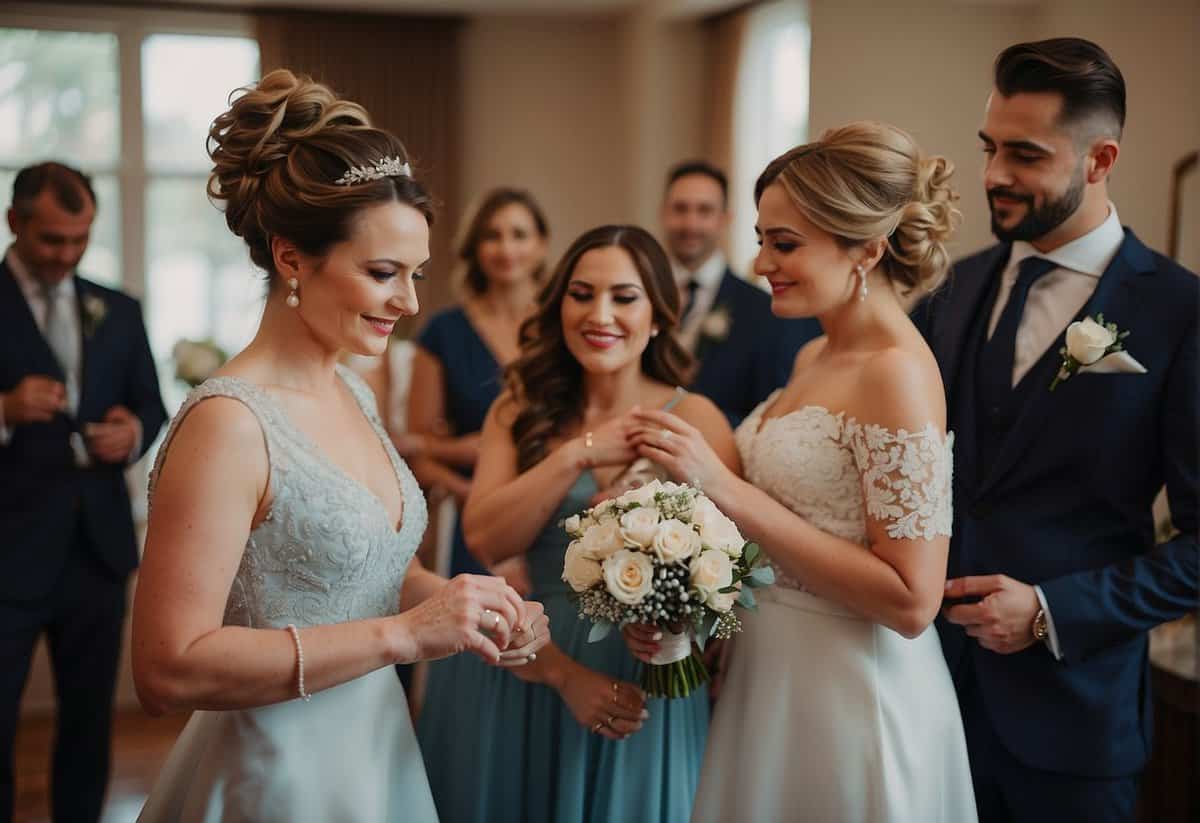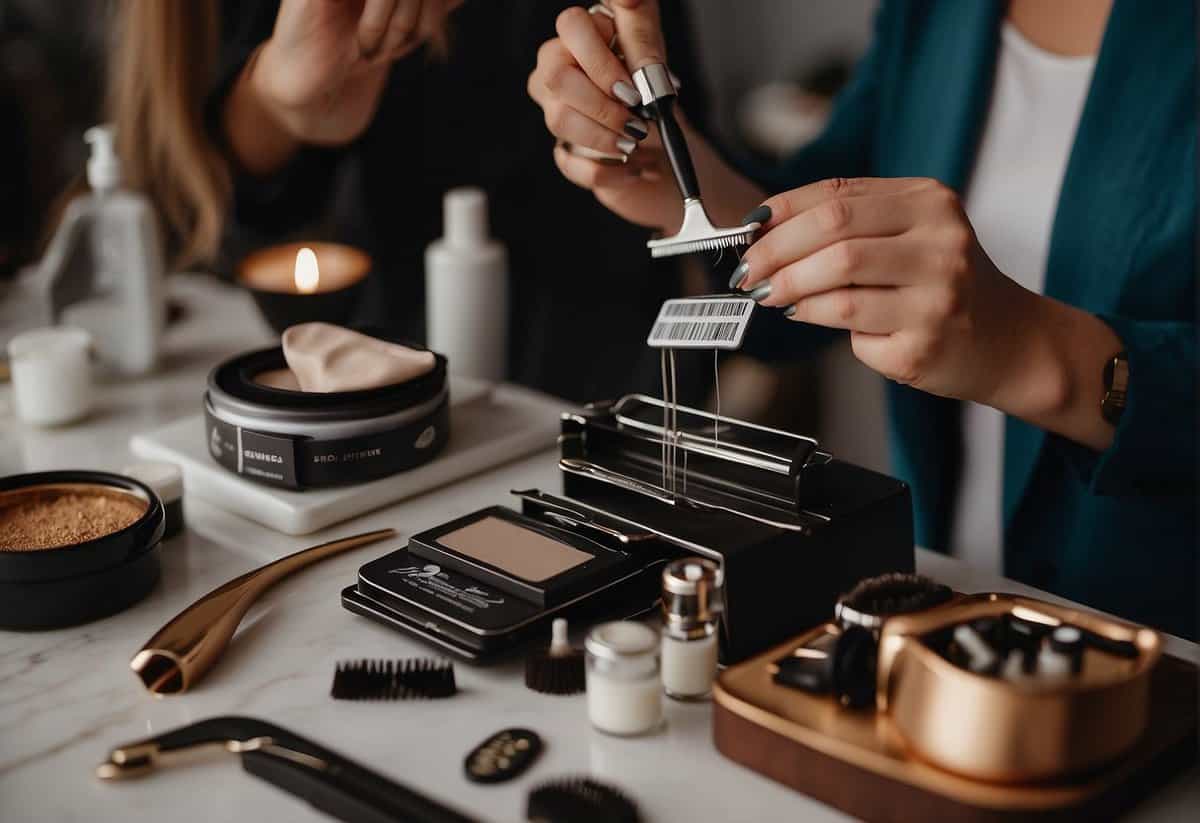Who Pays for Mother of Groom Hair and Makeup: Etiquette Explained
When planning a wedding, one of the delicate etiquette questions that arises is who should pay for the mother of the groom’s hair and makeup. Traditionally, wedding expenses are often clearly defined, but this specific detail can vary greatly from one family to another. It’s usual for the mother of the bride to cover her own beauty costs, but there are instances where the bride may choose to treat the mother of the groom as a gesture of goodwill. Understanding who traditionally covers these costs can help in planning your special day without any misunderstandings or stress.

Financial responsibilities for a wedding can be complex, and the specifics of who covers the cost of hair and makeup for the mother of the groom are no exception. Decisions may be influenced by personal preferences, cultural traditions, and the overall budget for the wedding. Some brides and grooms may offer to pay for these services as a way to express their appreciation, while others may expect the mothers to manage their own beauty expenses. Clear communication between all parties is key to ensuring everyone feels comfortable and included in the preparation for the wedding day.
Key Takeaways
- Wedding etiquette varies regarding hair and makeup expenses for the mother of the groom.
- Open dialogue about beauty service costs can prevent misunderstandings during wedding planning.
- The bride and groom may opt to pay for the mother of the groom’s beauty services as a kind gesture.
Roles and Responsibilities

When preparing for a wedding, understanding who handles the costs of certain aspects like the mother of the groom’s hair and makeup is essential. This can depend on traditional practices, family dynamics, and personal preferences.
Mother of the Bride vs. Mother of the Groom
Traditionally, the mother of the bride (MOB) is expected to make her wedding outfit choice first and inform the mother of the groom (MOG) to ensure coordination. However, this custom is not as strictly followed in modern weddings. Costs for hair and makeup may fall under this umbrella of planning and etiquette, but the rules are not as clear-cut. Often, it falls to personal choice; the MOG may opt to pay for her own beauty costs or, in a kind gesture, the bride and groom might cover it as part of the wedding party expenses.
Understanding Wedding Etiquette
Wedding etiquette has evolved, making it crucial for clear communication between both families in the planning stages of a wedding. Discussing who pays for the MOG’s hair and makeup openly can prevent misunderstandings. Traditionally, the MOG might not be included in the bridal party services, but inclusivity is a trend in contemporary ceremonies. If the bride and groom decide to pay for these services, it’s seen as a charming gesture to make the MOG feel included and appreciated.
Paying for Hair and Makeup

When it comes to the wedding day, the cost and arrangements for hair and makeup can vary. It’s important to understand who traditionally bears these costs and how to navigate budgeting for a professional look.
Budget Considerations and Who Traditionally Pays
Your budget is a pivotal factor in deciding who will pay for the mother of the groom‘s hair and makeup. Traditionally, the bride or her family may cover the cost of professional hair and makeup for the bridesmaids and herself. In many cases, the mother of the groom will handle her own expenses for hair and makeup. However, it is not uncommon for the bride and groom to extend the offer to cover these costs as a gesture of appreciation.
- Mother of the Bride/Groom: Usually manages own costs.
- Bridesmaids: Often their hair and makeup are paid for by the bride’s family.
- Trial Sessions: These are typically factored into the makeup artist or hairstylist’s costs.
Discussing Preferences and Expectations
Open communication about preferences and expectations is essential. You may have specific ideas about how you want to look on your child’s wedding day, and it’s important to discuss these beforehand with the makeup artist and the couple. If you’re considering a trial session to ensure your satisfaction with the style, this should be communicated as well. Being upfront about these details will help everyone involved plan accordingly for the day’s expenses.
Preparing for the Wedding Day

As the mother of the groom, getting ready for the big day includes selecting your beauty team and deciding if you’ll do a trial run. This preparation is not just about looking your best, but also feeling confident and comfortable throughout the event.
Selecting the Beauty Team
When you’re choosing your beauty team, consider professionals with experience in wedding styles. It’s a good idea to look at their portfolios to see if their work aligns with your taste. Some mothers prefer to use the same stylists as the bridal party for a cohesive look, which can also be cost-effective. Remember, communication with your stylist is key to ensuring your vision becomes a reality on the wedding day.
The Trial Run: Hair and Makeup Tests
A hair and makeup trial is an opportunity to test out your look before the wedding. This practice run helps to identify any potential issues with your skin reacting to the products or a hairdo that doesn’t hold up. It’s typically advised to schedule a trial a few months in advance, so you have time for adjustments, and align it with a day when you’ll be taking pictures, such as a bridal shower, for a real-world test. While trials are traditionally focused on the bride, it’s not uncommon for mothers to have one as well, ensuring that you’ll be picture-perfect and comfortable with your appearance.
Personal Gestures and Expenses

When planning a wedding, you’re faced with countless decisions, including the delicate matter of who pays for what. Particularly for the mother of the groom’s hair and makeup (HMUA), these costs can either be a thoughtful gift or a personal expense, and your approach might significantly shape this special day.
Gifting Professional Hair and Makeup Services
To gift or not to gift? That is a question you might ask yourself regarding the FMIL (Future Mother-in-Law). The gesture of the bride and groom covering the HMUA expenses for her can be viewed as an act of appreciation. Forums often discuss how it’s an elegant touch that can make the FMIL feel cherished and included.
Communicating About Individual Circumstances
However, it’s vital to engage in open communication about individual circumstances. Some prefer to arrange and pay for their own HMUA, seeking a specific look or experience. Others might find it an awkward expectation if not discussed upfront. By talking it over, you can avoid assumptions and ensure everyone is comfortable with the arrangements.
Frequently Asked Questions

Navigating the etiquette of who covers the costs for hair and makeup during a wedding can be nuanced. Here you will find specific answers related to the beauty preparations for the mother of the groom.
Should the mother of the groom have her hair and makeup professionally done for the wedding?
You might consider having your hair and makeup done professionally for the wedding to ensure you look your best in photos and ceremonies. Professionals can provide guidance on what style best complements the event’s aesthetic.
Is it customary for the bride and groom to cover the cost of the mother of the groom’s hair and makeup?
It’s not uncommon for the bride and groom to offer to pay for these services as a gesture of appreciation. However, customs can vary, and it’s often a personal decision made within each family.
What are the typical beauty expenses for the mother of the groom at a wedding?
The typical beauty expenses can include hairstyling, makeup, nails, and sometimes even skincare treatments leading up to the event. It’s best to discuss these details in advance to understand your financial commitments.
Are the bridesmaids’ hair and makeup expenses similar to those for the mother of the groom?
The bridesmaids’ beauty expenses are often similar in cost to those for the mother of the groom, though the bride may choose to cover these costs for the bridesmaids as a part of their gift.
What should the mother of the bride expect to pay for her beauty services at the wedding?
The mother of the bride can expect to pay for her own services, but at times she might also cover costs for other members of the bridal party. Each wedding can have its own set of expectations about this.
Who traditionally pays for beauty services for wedding party members including the mother of the groom?
Traditionally, wedding party members pay for their own beauty services, but it’s increasingly common for the couple to cover these costs, especially if they have specific requests or requirements for the bridal party’s appearance.


